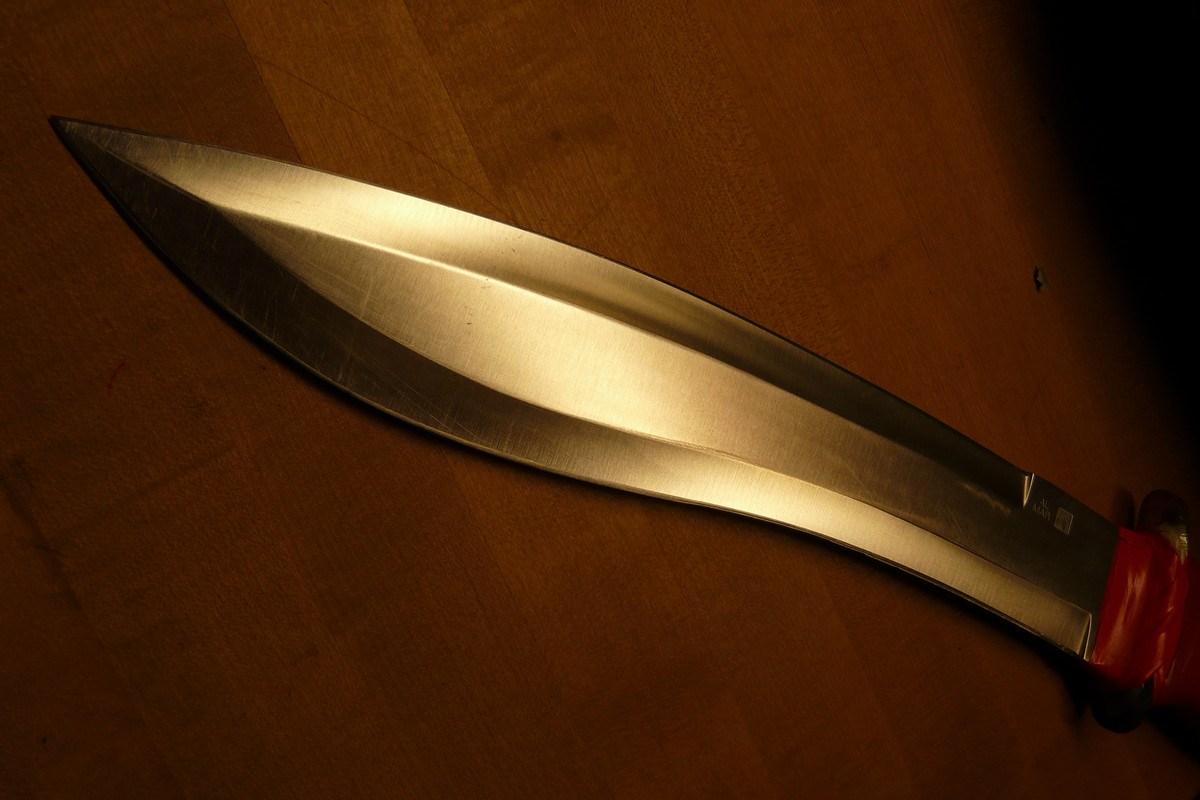DeadboxHero
Knifemaker / Craftsman / Service Provider
- Joined
- Mar 22, 2014
- Messages
- 5,411
The BladeForums.com 2024 Traditional Knife is ready to order! See this thread for details:
https://www.bladeforums.com/threads/bladeforums-2024-traditional-knife.2003187/
Price is $300 $250 ea (shipped within CONUS). If you live outside the US, I will contact you after your order for extra shipping charges.
Order here: https://www.bladeforums.com/help/2024-traditional/ - Order as many as you like, we have plenty.
Yeah, I see how first experience with some steel being bad can put you off those steels.Ah, I had an Ontario RAT in D2 and took a small semi-circular piece of blade off within a month or so. I tried contacting them and got no response so it probably soured my opinion and it's probably unfair to say all D2. If I was doing anything else with it, it would be a fine choice for an EDC, but it lacked for me as a work knife steel. And, as you say, it's a chore to sharpen.
You can also do it on any stone, diamond sharpening equipment is pricey.
I translate that as good steel works and the other stuff covers the difference, and maybe with skills more.One more thing.
IMO, all steels start at the same place, the raw untempered billet.
Since blades are still made by humans, you introduce so many variables into the finish that unless it's done by a machine, IMO, it's not worth thinking about the quality of various steels.
You have different tempering methods; oil plunge, cryo, air cooling, etc. and again, unless done in controlled situations, you cannot possibly recreate exacting results.
Then, ten, twenty extra seconds on the belt sander can change all that (especially small, thin blades). Plunge in water to cool? You heard of re-tempering? Again, adding another variable.
Yes you can check for Rockwell, but unless you are putting every blade under a microscope are you sure you are getting the same structure from each blade?
I say this more about commercial blades as I would think they only check a small sample of work if they check at all.
Knives made in runs of 200? you think someone spends the same time and effort on all 200?
You heard of stuff made on Friday afternoons?
Remember what the bottom line is...
yeah go ahead and stamp it Elmax! it is Elmax after all...or at least that's what it started out as.
You think of the steel assuming every knife is made the exact same way.
Metal work is a science.
Go ahead and sweat the steel.
Nothing wrong with that.
I sweat the maker and his experience with the steel he is using.
My disclaimer: most of my stuff is 1095. Hard to fu(k that stuff up.
Or 440A/7CR14MoV, 420HC/Case "True Sharp", 4116 Krupp, and even (gasp) the offshore Buck 300 series with 420J2, if they want a stain-less blade.If people only bought the knives they need, there would be far less manufacturers in business. I doubt many people would struggle to get by if they only had a simple slip joint with a 1095 carbon steel blade in their pocket to handle their daily cutting tasks.
Exactly!!! I was actually pretty fond of my Browning Black Label folder in 440A. It sharpened up super easy and took a very nice edge.Or 440A/7CR14MoV, 420HC/Case "True Sharp", 4116 Krupp, and even (gasp) the offshore Buck 300 series with 420J2, if they want a stain-less blade.
I know I don't struggle with my slipjoints that use these steels, or those with 1095 or "T10"
 I've had a big expensive chopper fail completely , catastrophically , and dangerously .
I've had a big expensive chopper fail completely , catastrophically , and dangerously .



I agree , probably a bad HT but that's hard to sort out at the consumer level .That sort of failure isn't down to the steel, it's down to the maker being utterly incompetent. I have my grandfather's khukuri from when he served in Burma with a platoon of Gurkhas that is in no way a super steel, or even a mid tier steel of any type, but I can hack down a tree with the thing.
Steel is one facet of the whole package. Most of the time, S35VN will serve you far better than 5cr13mov. The former is expected to have a longer lasting edge and more corrosion resistance.
However, we can’t ignore the other factors that come into play, such as heat treatment, edge angle, edge type (toothy vs mirror polish), thickness behind edge, grind type, blade shape, handle ergonomics, and overall build quality. All of these will determine how much you enjoy the knife and how well it performs. As you spend more time and moolah on this hobby, you will eventually develop your tastes.
In sum, steel does matter. Higher end steels have inherent advantages over cheap steels made by manufacturers that care little about customer satisfaction. But, you need to good steel to come with the other winning factors mentioned above. It’s like cooking the perfect beef stew. The most expensive beef in town can make for crappy stew if you screw up the salt content, temperature, cooking time, etc.

